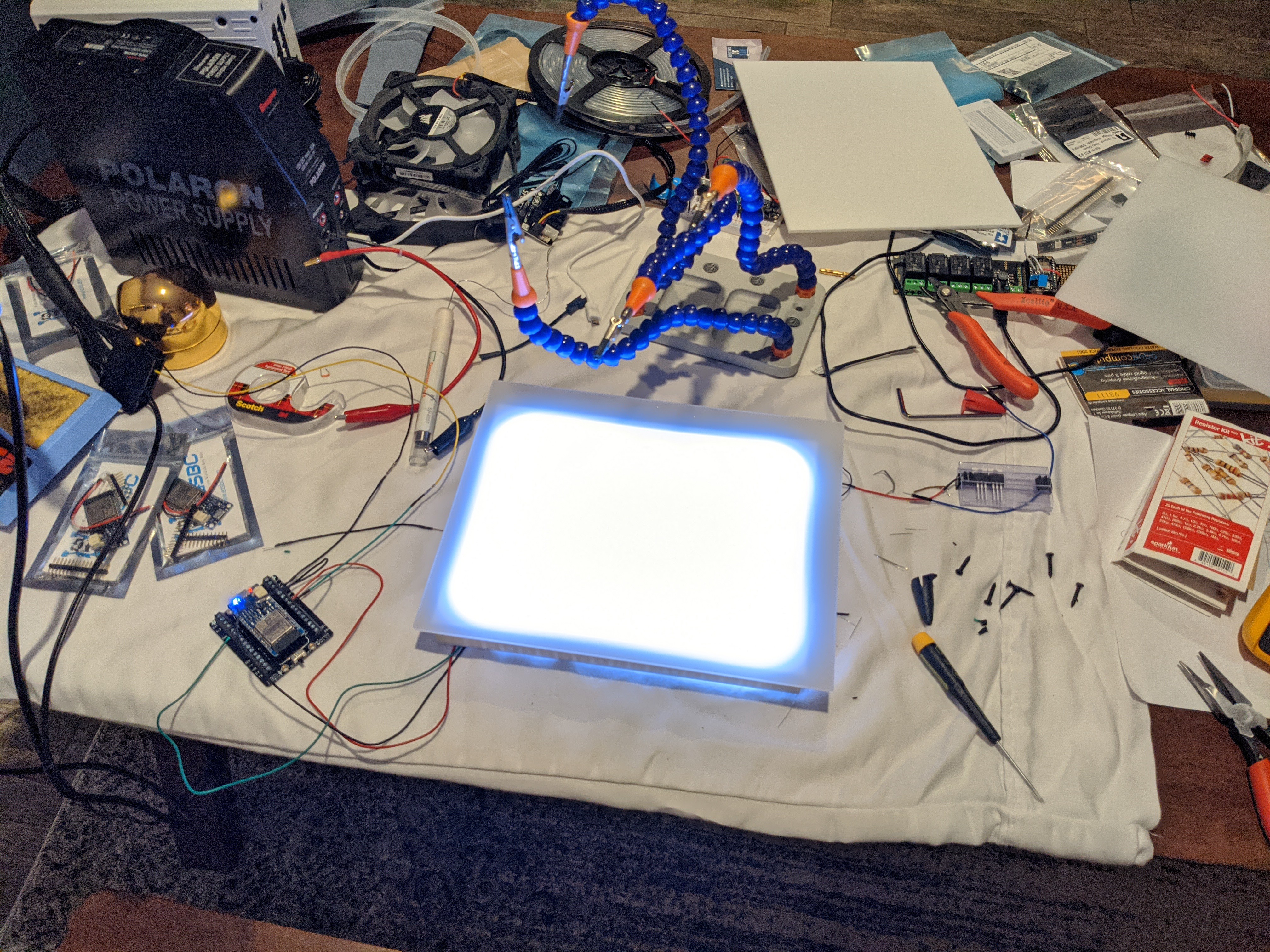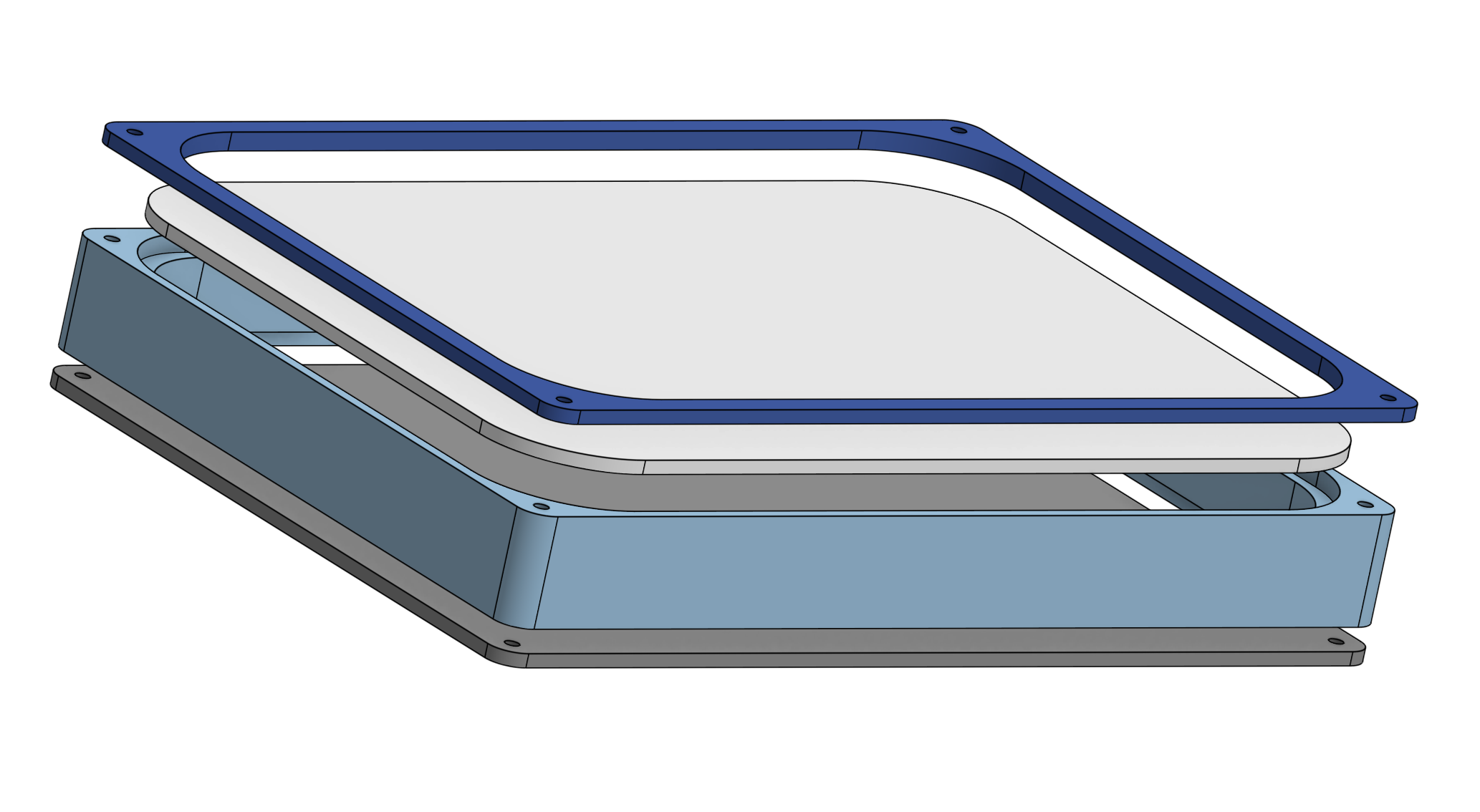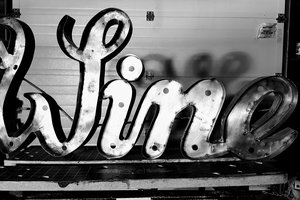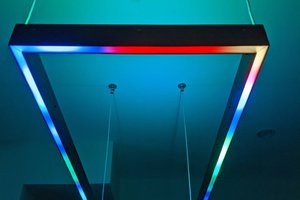It is in the research phase and I am playing with different LED strips, panel opacity, sizes, power supplies, and other parts. I'm taking lots of notes from various other projects and videos.
The goals of the project:
- A key light that is bright enough to fill out subject lighting of me and my face on camera.
- Controllable over WiFi (will likely use ESP32 with ESPHome for control).
- Lightweight enough to be mountable on 1/4 inch camera mounts and desk clamps.
- Able to be powered on at a good brightness for long periods of time without overheating (maybe limiting output to 75% full).
 Andy Shinn
Andy Shinn



 Mark Mullin
Mark Mullin
 Steve Pomeroy
Steve Pomeroy

 ric866
ric866
I'd love to continue this project at some point. But I've shelved it for now. I will probably revisit it when I learn some more about side-lighting panels. My testing didn't give me good enough light output through edge-lit acrylic.